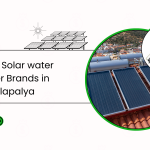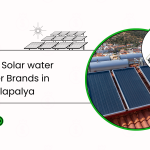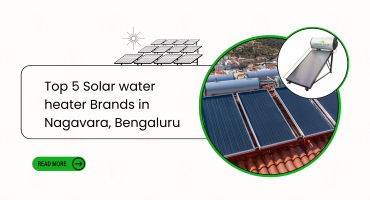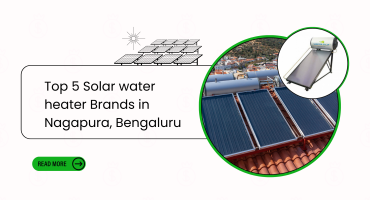
Varistor Solar is dedicated to empowering individuals, businesses, and communities with the transformative power of solar energy. We believe in a brighter, cleaner future and are committed to making sustainable living accessible to everyone.
+91-9113690456
Email: sales@varistorsolar.com
Varistor Solar
NO 40/C, KALKERE VILLAGE,12TH MAIN, NRI LAYOUT,Ramamurthy Nagar, Bangalore North,Bangalore- Karnataka, 560016
Solar water heaters are an excellent way to harness the sun's energy and reduce electricity bills. Among the various types of solar water heaters, the evacuated tube solar water heater stands out for its efficiency and effectiveness. In this comprehensive guide, we will walk you through the process of installing an evacuated tube solar water heater. We’ll cover everything from choosing the right location to the final installation steps. This guide will help you understand the nuances of solar water heaters, solar water heater prices, and the benefits they offer.

Introduction to Evacuated Tube Solar Water Heaters
Evacuated tube solar water heaters are designed to absorb and retain heat more efficiently than flat plate solar collectors. They consist of a series of glass tubes that are vacuum-sealed to reduce heat loss. Each tube contains a metal absorber that captures solar energy and transfers it to the water.
Varistor Solar, a leading company in the solar water heater industry, offers a range of high-quality evacuated tube solar water heaters. These heaters are known for their durability, efficiency, and cost-effectiveness.
Benefits of Solar Water Heaters
- Cost Savings: Solar water heaters significantly reduce your electricity bills.
- Environmental Impact: They use renewable energy, reducing your carbon footprint.
- Reliability: With fewer moving parts, solar water heaters require less maintenance and have a longer lifespan.
- Energy Independence: Using solar energy decreases reliance on non-renewable energy sources.
Selecting the Right Solar Water Heater
Before diving into the installation process, it is crucial to select the appropriate solar water heater for your needs. Here are some key factors to consider:
Solar Water Heater Capacity
The capacity of a solar water heater depends on the number of occupants and their hot water needs. Common capacities include 100 liters, 150 liters, and 200 liters. For example, the solar water heater 200 ltr price might be suitable for larger families or commercial establishments.
Types of Solar Water Heaters
There are various types of solar water heaters, including direct and indirect circulation systems. Evacuated tube systems are highly recommended for areas with colder climates due to their superior heat retention capabilities.
Solar Water Heater Price
The price of solar water heaters varies based on capacity, type, and brand. It's essential to compare different models and brands to find the best solar water heater that fits your budget. You can check solar water heater prices online or visit local dealers.
Installation Process
Installing an evacuated tube solar water heater involves several steps. Below, we outline a step-by-step guide to help you through the process.
1. Site Assessment and Preparation
Choosing the Location
The first step is to choose an optimal location for your solar water heater. The location should receive maximum sunlight throughout the day. Typically, rooftops are ideal locations for solar water heaters. Ensure the area is free from obstructions like trees or buildings that may cast shadows.
Structural Assessment
Assess the structural integrity of your roof to ensure it can support the weight of the solar water heater. Consult a professional if necessary.
2. Mounting the Solar Collector
Assembling the Frame
Start by assembling the frame that will hold the evacuated tubes. Follow the manufacturer’s instructions provided with the solar water heating system. The frame should be sturdy and positioned at an angle that maximizes sunlight absorption.
Installing the Frame
Secure the frame to the roof using appropriate mounting hardware. Ensure the frame is level and stable.
3. Installing the Evacuated Tubes
Preparing the Tubes
Handle the evacuated tubes with care as they are fragile. Inspect each tube for any damages before installation.
Inserting the Tubes
Insert the tubes into the frame. Ensure they are properly aligned and securely fastened. Each tube should be connected to the manifold that will distribute the heated water.
4. Connecting the System
Plumbing Connections
Connect the manifold to the existing plumbing system. This involves connecting the cold water inlet and the hot water outlet. Use appropriate fittings and ensure all connections are leak-proof.
Installing the Pump (If Required)
Some systems may require a circulation pump to ensure water flows through the system efficiently. Install the pump according to the manufacturer’s instructions.
5. Electrical Connections
Connecting the Controller
Install the solar controller that monitors and controls the system’s operation. The controller ensures optimal performance and prevents overheating.
Wiring the Sensors
Connect the temperature sensors to the controller. These sensors monitor the temperature of the water in the storage tank and the manifold.
6. Testing and Commissioning
Filling the System
Fill the system with water and check for any leaks. Bleed any air from the system to ensure efficient operation.
Testing the System
Turn on the system and monitor its operation. Check the temperature readings and ensure the system is heating the water efficiently.
Maintenance and Troubleshooting
Regular maintenance ensures your solar water heater operates efficiently for years to come. Here are some tips:
- Regular Inspections: Inspect the system regularly for any signs of wear or damage.
- Cleaning the Tubes: Keep the evacuated tubes clean to ensure maximum sunlight absorption.
- Checking the Controller: Ensure the controller is functioning correctly and displaying accurate readings.
- Professional Servicing: Schedule annual servicing by a professional to check for any issues and perform necessary maintenance.
Conclusion
Installing an evacuated tube solar water heater is a smart investment that provides long-term savings and environmental benefits. By following the steps outlined in this guide, you can ensure a successful installation and enjoy the advantages of solar energy. Varistor Solar offers high-quality solar water heaters that are reliable and cost-effective. For more information on solar water heater prices, you can visit their website or contact their customer service.
We hope this guide has been helpful. If you have any questions or need further assistance, please leave a comment below. We would love to hear from you!
FREQUENTLY ASKED QUESTIONS
An evacuated tube solar water heater uses glass tubes to capture and retain solar energy, efficiently heating water.
Installation typically takes one to two days, depending on the complexity and site conditions.
While possible, professional installation is recommended to ensure optimal performance and safety.
Prices vary, but a 200-liter solar water heater generally costs between $500 and $1000.
Yes, it can still heat water on cloudy days, though it may be less efficient compared to sunny days.
Now It's Your Turn:
Making the switch to solar water heaters in Delhi is a smart and sustainable choice. The top brands like Varistor Solar™, Racold, Havells, V-Guard, and AO Smith offer reliable options to meet your hot water needs efficiently.
Among these, Varistor Solar™ stands out as the top choice in India, trusted by many. We provide a variety of solar water heaters, catering to different preferences and requirements. Our clients trust us for our quality and performance.
For more details about our solar water heaters, call us at 9113690456 or email sales@varistorsolar.com. Choose Varistor Solar™ for a greener and more energy-efficient future.
"WHAT YOU CAN READ NEXT"
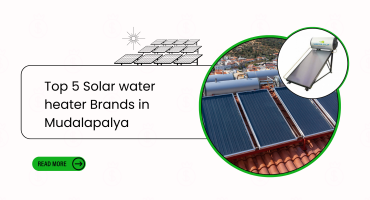 Read more +06 May 2025 in Solar Water Heater
Read more +06 May 2025 in Solar Water HeaterTop 5 Solar water heater Brands in Munekollal, Bengaluru
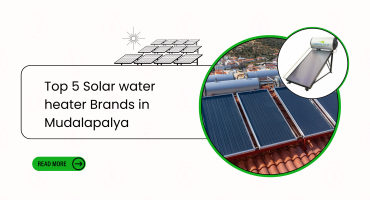 Read more +06 May 2025 in Solar Water Heater
Read more +06 May 2025 in Solar Water Heater
 Call or Text:
Call or Text: 